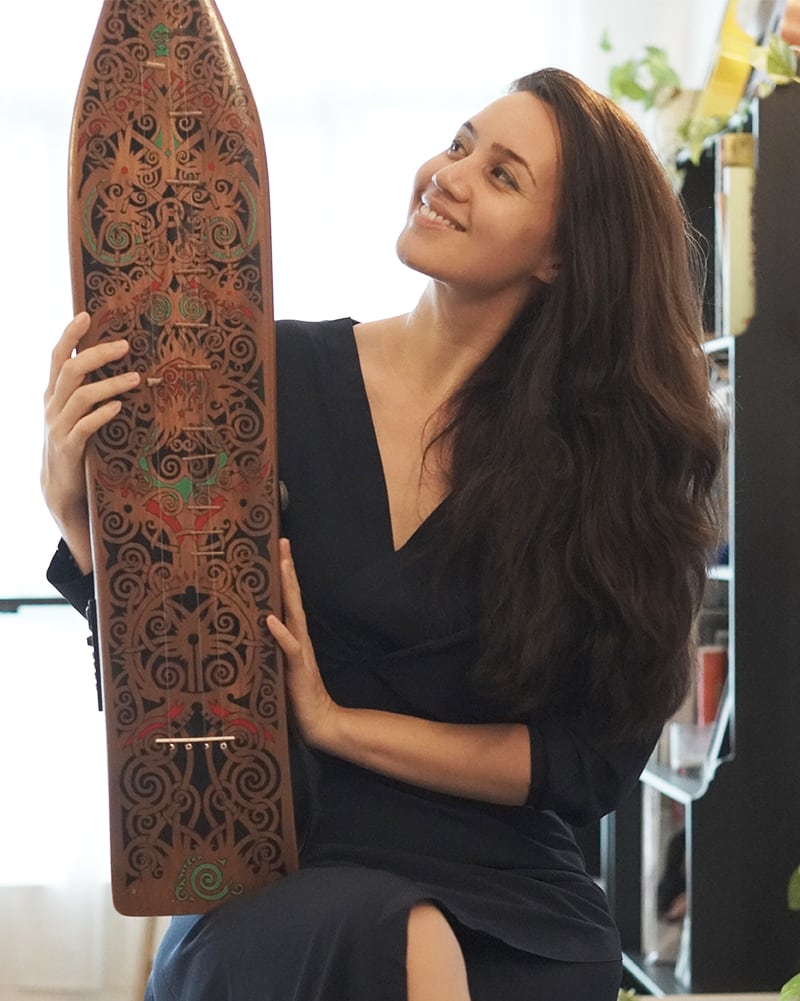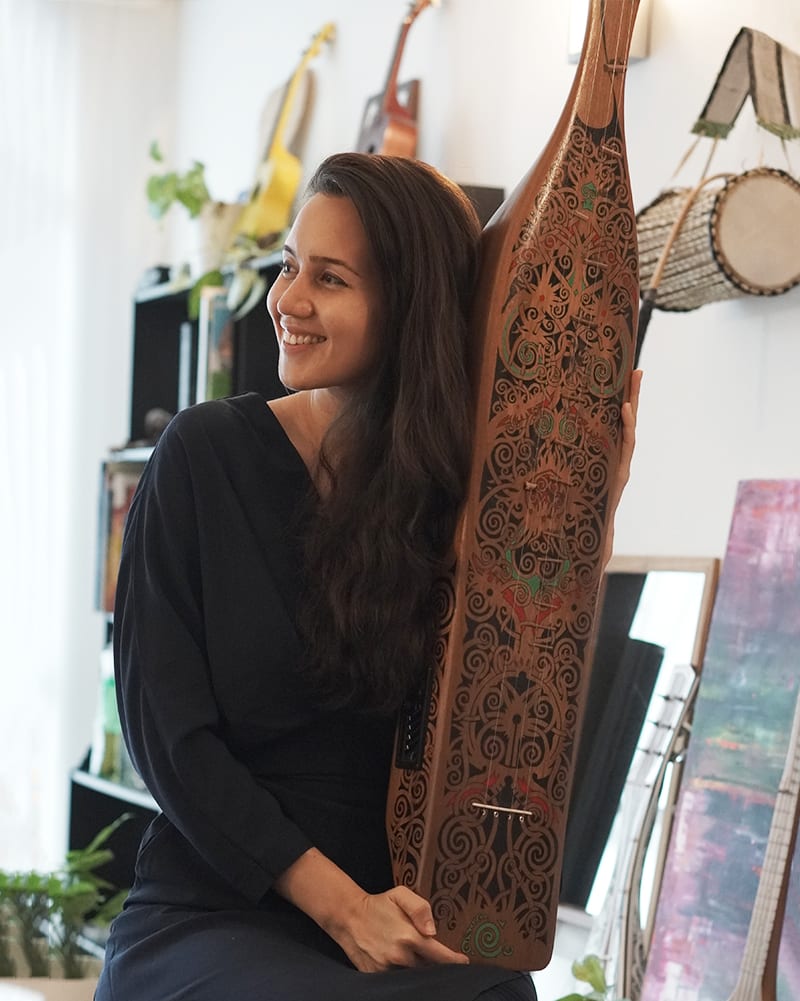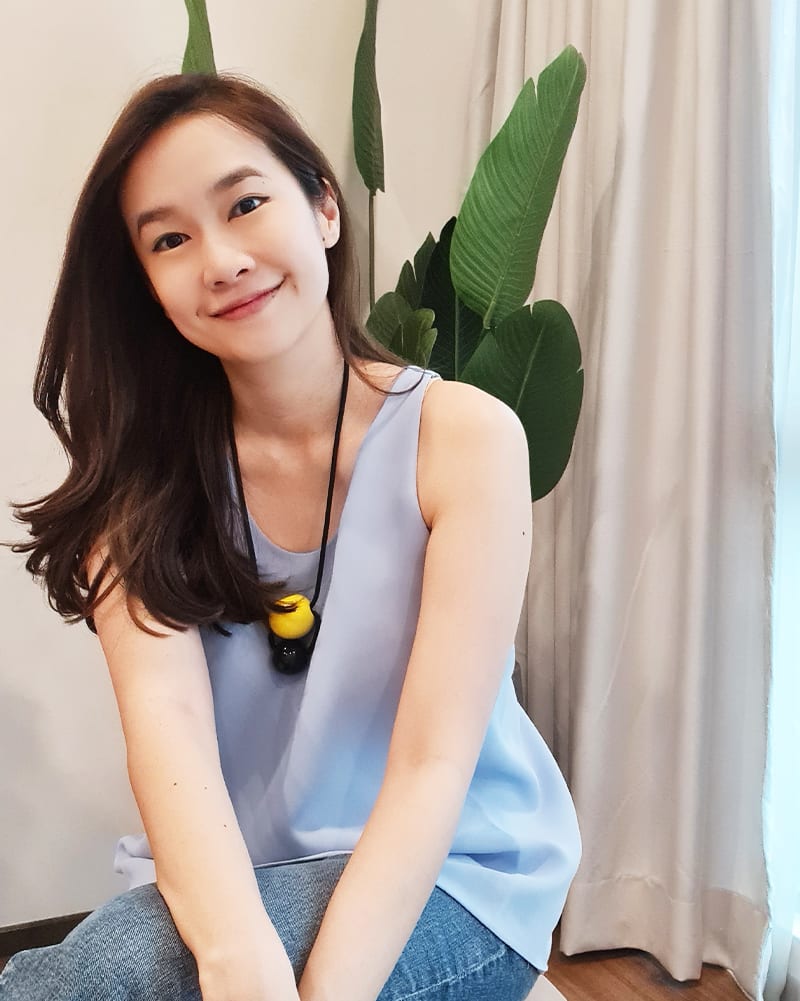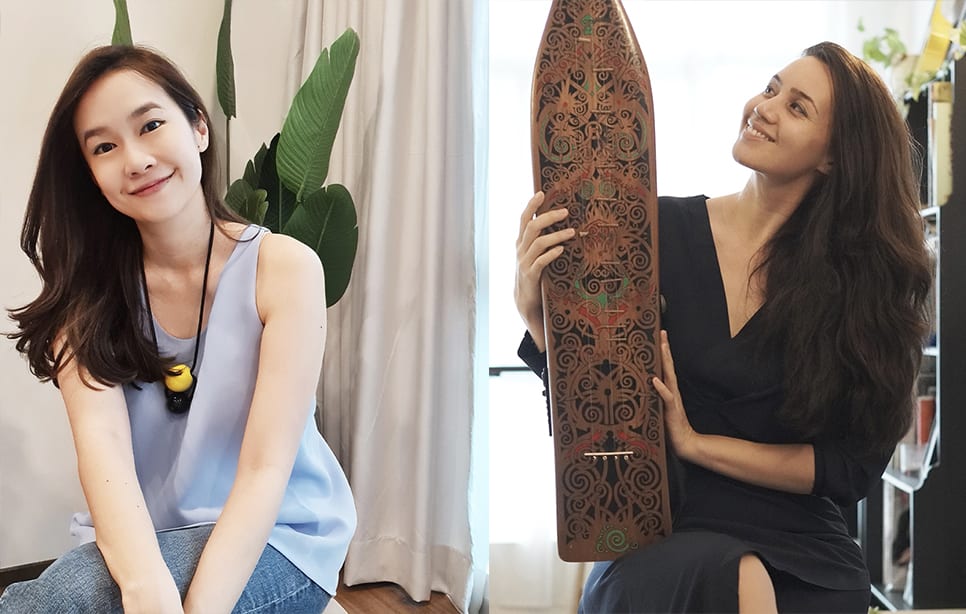
From innovating new ways of passing on indigenious culture to utilizing digital art to raise social concerns, we go into conversation with two female personalities about what it means to be creatives in this day and age. Get cozy with us and read the stories of Alena — a World Music artist and one of the first women to play the sape, and Marianne — a burgeoning digital illustrator on Instagram, and actress in her own right.
As one of the first Kelabits to be born and raised outside of the rainforest, the cultural influences of the indigenous communities of Borneo are pertinent to Alena Murang. Whilst learning to dance to sape music at a young age wasn’t something she expected to have shaped her career in her growing years, she wields the traditional instrument now as a means of creative storytelling for future generations, and people around the world — to help ensure her heritage is not forgotten.
How would you describe yourself? Tell me more about what you do in a sentence (or two).
I see myself as a storyteller; telling the story of the Ulu Baram people through music and art.
When and how did you first get into your field of work?
I started playing the sape when I was 10: prior to that, my cousins and I were just learning to dance to sape music. Back then, there wasn’t really anyone learning or performing it — and it was even less common for women because they weren’t allowed to touch the sape in the past. It’s actually very easy to make it sound like something when you first start learning to play the sape, but it’s hard to master.
We learnt it from Uncle Matthew who was one of the younger Sape masters in Kuching; he was looking to pass it on to the next generation, so we were actually his first students!
My venture into sape as a career was really a gradual thing. I was just playing it for fun through my teenage and university years overseas.
When I came back to Malaysia to work as a consultant, I did a couple of live gigs but it was only in 2013 that some of my friends who were in a band invited me to play the sape with them on their US tour, and I decided to just go along with them. I think one thing just led to another after that.
Share with us about your biggest creative inspirations; the who, what or where.
I’m very heavily influenced by nature; it gives me this feeling and space where I am best able to create my music.
Musicians who have inspired me probably include AURORA and English indie pop band: London Grammar. I particularly love how they tend to blur the lines between ‘genres’ where their music is concerned. It’s something my band does as well; we don’t really want to stick to a certain discipline of music.
The people closer to me have influenced my musical tastes; my older brother made me listen to a lot of rock music, and my dad and cousins shared their love of American folk and country music with me.
What values do you hold dear to you?
When I’m working with my team — the songwriters, the producers, the photographers, the stylists etc. — I make it a point to always have the conversation with everyone: to make sure that we’re on the same page when it comes to the story we want to tell.
Because the sape is an instrument that’s so deeply rooted in tradition itself, cultural sensitivities and nuances are definitely important to me. Not only do I want to ensure that the costumes I’m wearing are appropriate, but that I’m educated enough to be telling the story of my people. I’m always reading a lot of academic journals, learning traditional songs, and spending time listening to the elders.
How would you sum up your creative process? What is it like?
I’m very abstract when it comes to my music...everything has a story or meaning behind it. It could be a tune about the day’s breeze, or my emotions for the day. I’d jot my ideas down in my journal — which I always carry with me to write my lyrics or music.
With regards to the rest of the instruments — my cousin Joshua, and my band, have learnt to speak my language; they understand me and attempt to translate my feelings into the rest of our music. We kind of develop the song together...I might say how I want it to feel, but how it plays across the other instruments really depends on them as well as our differential experiences of certain things i.e. a thunderstorm or the warmth of the sun.
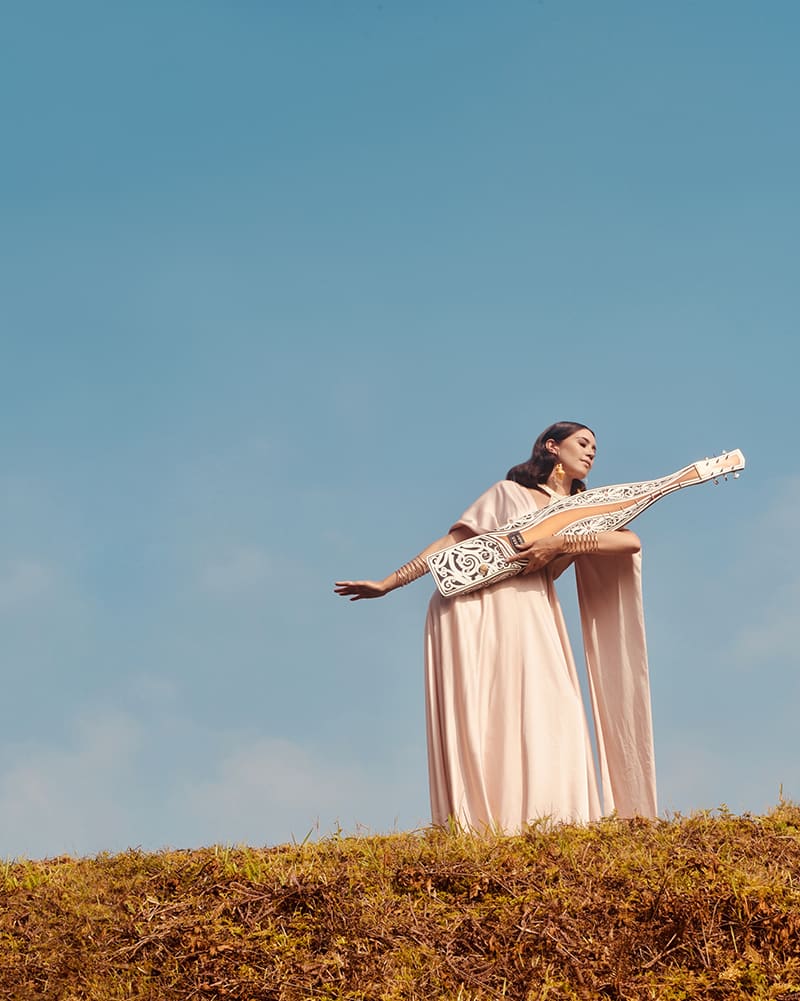
(Photo: Clash Donerrin)
Was there a personal challenge you faced in your career that you’d say you overcame and came out stronger because of it?
Hmmm, I’d say one of the biggest challenges is doing my kind of music in Malaysia? The genre of music that I’ve sort of fallen into is called ‘World Music’. We don’t really have an ecosystem or a network for that in Southeast Asia...and we had to look at very specific record labels, management, agents, and even specific media parties that could publicise and market for our genre.
It felt like we kept falling into a sort of ‘tourism’ bucket which had its advantages, but also limited our reach. Perhaps this was because sape was considered traditional music, but I wanted our music to simply be regarded as music, even though we’re not necessarily mainstream.
I had to sort of navigate this whole space on my own: finding agents, a record label, a team, and being creative with figuring out my own system around these things.
So for the past couple years we’ve just been trying to focus a lot of our reach overseas (since the market is wider there). We’re not quite there yet...but I think we’re getting there.
How has the current pandemic affected your way of life and the way you approach your music?
With the pandemic, I’ve definitely had a lot more time to sit and think about my songs and even get more conversations going with the rest of my band in terms of the direction of our music.
Perhaps one crucial thing is that I actually ended up getting my own recording gear during this lockdown period, and had to learn how to use it. Since then, it’s been a lot easier for me to just sit down and record a demo whenever I feel inspired.
Tell us about your personal sense of style.
It’s very casual and simple actually. I’m always in jeans and a simple white or black tee. My colour palette does extend to some muted hues of blues, greens, grays. Perhaps a simple, basic dress might be in that mix too.
I have my artist, on-stage style as well, of course. Lately, it has been filled with pretty bright colours that I guess we can categorize as contemporary Dayak style? For one of my photoshoots, my stylist just took my grandma’s brass earrings and sort of bling-ed them up with these colourful embellishments — I thought it was pretty creative when I saw them!
Any upcoming projects or ideas you’d like to share with us?
Project Ranih is an ongoing project that I’m working on with Joshua: it’s basically an online archive dedicated to harvesting and maintaining a deep connection to the folksongs of the Kelabit people, for both the future generations of Kelabit children to stay connected to their roots, and for people around the world to learn about their community.
My music video was just released a few weeks ago — I’ve been working on that since September 2020…
And something else that’s not really set in stone; I’m working with a group of people to find out how we can inculcate the love and curiosity surrounding cultural heritage...in children. Not just for the Kelabit people, but cultivating the love for stories and keeping tradition close to heart.
Could you share a piece of advice on how to stay creatively focused and inspired in such turbulent/confusing times?
Just start! That’s something I need to put into practice myself. Sometimes there’s so many ideas in my head, but I really just need to jot it down, sketch it out or get the ball rolling, instead of viewing it as such a big thing. Just start creating...and you’ll get there eventually.
Connecting with people through art has always been something that was kept in the peripheries of everyday life for Marianne. Whilst she was working in the hospitality industry, she would find pockets of time to do illustrations and take up fun side gigs in acting. Soon enough, illustrating, acting and stitching stories together gradually occupied a larger space in her life — one she realised she could wield with transformative power. Now she constantly finds herself in a position to inspire her followers on social media, giving important issues a visual voice with a touch of humour.
How would you describe yourself? Tell me more about what you do in a sentence (or two).
I’m Marianne, and I do both illustration and acting. In terms of digital illustrations, I mainly do simple, straightforward comics that are mostly on the humorous side! For acting, I’ve done some movies and various online YouTube series across Malaysia and Singapore.
When and how did you first get into your field of work?
In the beginning I felt like I stumbled into this industry quite a bit. I didn’t think social media would be an actual thing in 2021, so when the followers started coming in 5 or 6 years ago with my art Instagram account — @thinkannethink — I didn’t really know what to do with all of it. Even though I studied digital animation in school, my family initially had different plans for me: they wanted me to go into the hotel industry.
It took me a long time before I realised that this was a rare opportunity that I shouldn’t give up; so I started thinking about what else I could do or give to my audience that would be useful. After about 1 or 2 years, all this started to open up a very different path for me, I decided I could leave my hotel job and do this full-time.
The social media following actually translated into business, and that’s when I tried to figure out how to snowball this into a productive way whilst still contributing back to society in my own little way.
It was the same for my acting career as well — one viral YouTube video led to the next in terms of landing roles in films, more Youtube content, commercials and even a TV series in Singapore.
I’ve always had a personal interest in illustrations; annually I participated in Comic Fiesta, selling little art books I created with my friend. The books would sell like hotcakes and me and my friend would be so happy (laughs).
What values do you hold dear to you?
In terms of the comics that I do...I’m more for entertaining people with random daily musings. I like to observe people; the way people talk, the things people are concerned about, and how people deal with different things.
On that front: I want my comics and videos to not simply be a nice break for my audiences as they scroll through their social media feeds, but also to connect and relate to people’s thoughts and feelings.
How would you sum up your creative process? What is it like?
In terms of coming up with my comics or skits — I’m always on the lookout for that one key thing that will connect to people. So I read up alot; news, stories, clips to keep myself updated with what’s happening in our climate right now.
I also do collaborations with actual experts to merge both informational value with visually pleasing entertainment, especially when it’s concerned with heavier topics.
With a lot of my snappier, more humorous content, it’s a little more straightforward: if I think it’s good or that it’ll be typically funny, I’ll just make sure to write notes down. I’d sieve through my ideas at the start every week to review what stands out the most before thinking about how I can translate that into content.
Was there a personal challenge you faced in your career that you’d say you overcame and came out stronger because of it?
Imposter syndrome, maybe? So I have this thing where I doubt myself, and self-sabotage to some extent. I tend to disassociate from certain posts of mine that did well, because it feels like I wouldn’t be able to produce content that would match up to the same extent.
So I wouldn’t say that I’m a 100% over it, but I’ve learnt to investigate that uncomfortable feeling by jotting it down in my journal, properly addressing it, and just reflecting on the more redemptive qualities about myself — to sort of steer away from the negative self-talk in my head.
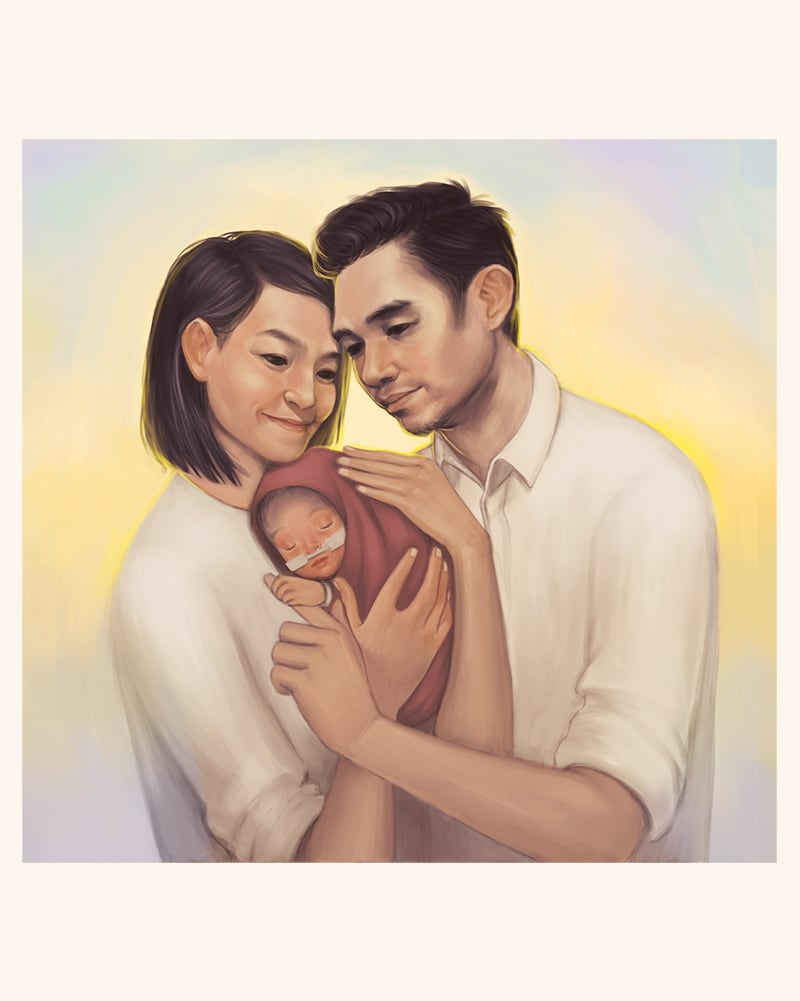
(Photo: Marianne Tan)
What has been the most fulfilling project you’ve been a part of and why?
If you’re doing illustration work, the first question that always pops up is “Can you draw me?”. Whilst I don’t usually attend to personal requests for portraits: one time, there was this lady that approached me and told me the story of how she lost her baby after giving birth. She wanted an illustration of herself, her husband and her late child altogether — for their wedding anniversary. I definitely couldn’t reject such a heartfelt request and I made up my mind to ensure that my work would do them justice.
I did my research: tried to get to know them and their lived experiences during that particular period in time, and attempted to translate all that into the illustration I was creating before me.
She sent me a video a few weeks later with her husband’s response to the gift: he was crying. I teared up all the same too; that was probably one of the most meaningful moments I’ve had over the years.
How has the current pandemic affected your way of life and the way you approach your art?
Lockdown first started in March last year. And at that time: I just thought that it would be more efficient and more productive so that I could come out feeling ‘successful’.
But I didn’t take into consideration the mental anxiety that could weigh in; there were huge sudden changes, specifically in terms of work. It suddenly stopped, and I didn’t anticipate the shock and sense of despair that came from wondering about where our industry was going.
But after a few rounds of the lockdown situation in Malaysia, I’m definitely better prepared to anticipate and manage my anxiety surrounding the unknowable aspects of our future. I’m doing classes to help upgrade my skills, and I’m taking up personal projects that I know I can and want to manage for myself, to prepare for the new normal ahead.
Tell us about your personal sense of style.
I really lean towards non-typical shapes and asymmetrical designs a lot. Stuff that’s simple, without too many patterns. I love the mesh between something that is creative and sophisticated at the same time.
When I was working in Singapore for a while, I remember stumbling upon IN GOOD COMPANY in ION Orchard: I recall strolling in and thinking that the designs of the clothes were quite different and interesting...so much so that I wanted to try them on.
The moment I tried them on I wanted to have them all, so I just bought some outfits on the spot! It’s really hard to find similar designs back here in Malaysia…
Any upcoming projects or ideas you’d like to share with us?
Nothing super big, but I’ve actually lined up a few personal projects. I’m preparing myself for jobs after the lockdown; I want to be able to work with brands that appreciate humour be it in skit or illustration format. I’m looking to focus on a lot of skits based on the humour of the common female experience, and some comics that maintain a good mesh of education with regards to mental health with everyday life issues.
The next one that might be appearing is a Dyson advertisement? I’m glad I could go a little crazy on this one (laughs). Watch out for it!
Could you share a piece of advice on how to stay creatively focused and inspired in such turbulent/confusing times?
Journal! Grab your coffee or tea at the start of the day and simply write down what you want to do for the day, things you want to do for the day, how you want to approach the day ahead etc. because it really helps you establish how you want to feel for the day.
Watch Alena’s latest music video ‘Warrior Spirit’ and follow Marianne’s journey with digital art at @thinkannethink.

